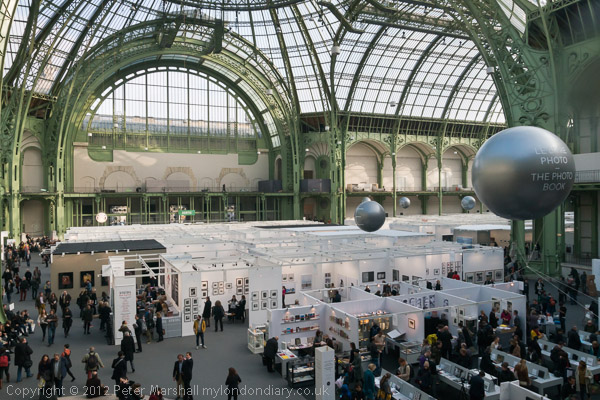The Autochrome process was patented by the Lumière brothers in France in 1903 and sold from 1907. It was an ‘additive’ colour process, mixing light of the three primary colours like the image on a computer screen, rather than the later subtractive processes developed in the 1930s, including Kodachrome and Agfacolor. A tri-colour screen was incorporated onto the glass plate by squashing a single layer of a random mixture of dyed potato starch grains onto an adhesive coating, the gaps between the grains were blocked with lampblack and the screen varnished to preserve it, before being coated with a panchromatic black and white emulsion.

Public domain image of a highly magnified autochrome screen – Wikimedia Commons
For practical reasons, probably due to the limitations of available dyes, the Lumières used orange-red, blue violet and green dyes rather than the conventional red, blue, green (RGB) set. As gaps between the starch grains were blocked by black lampblack, and the coloured starch grains also absorbed light, far less light reached the film than when making a black and white image. A strongly coloured orange filter was needed on the lens, partly to cut out all the UV, but also to correct for the higher sensitivity of the emulsion to the blue end of the spectrum – as panchromatic films of the era were still not very sensitive to red. They were also slow by modern standards, so exposures were length, made with the camera on a tripod – and avoiding subject movement.
The plate was developed in a normal developer to give a negative silver image. This was then chemically removed leaving the unexposed silver halide on the plate which could then be exposed overall to light and the plate developed a second time to give a positive image. These images were very dark but the colour could be extremely good. Particularly when enlarged, the results show a brightly ‘pointillist’ effect which can sometimes be annoying but often adds to their attraction.
On the Paris1914 site there are a good selection of coloured images of Paris taken between the introduction of the process and 1939, including some taken by Léon Gimpel (1878-1948), a well-known amateur photographer of the era whose work was celebrated in a show at the Musée d’Orsay in 2008. One of his pictures is of an exhibition in the Grand Palais in 1909, which perhaps looks a little more interesting than Paris Photo at the same location 103 years later.

The Grand Palais in 2012 – with smaller balloons
The quality of the results is quite variable – one of my favourite images, ‘Une famille, rue du Pot-de-Fer, Paris, 24 juin 1914′ by Stéphane Passet, could almost have been taken using modern materials, while some of the others are extremely crude.
You can see more about the Albert Kahn collection – which included these among around 70,000 autochromes – in a presentation about La Mongolie, entre deux ères, 1912-1913, about the current show (until 31 march 2013) at the musée Albert-Kahn in Boulogne-Billancourt on the edge of Paris.
You can also see a more varied selection of work on an official French government site, Autochromes Lumière, a superbly detailed site full of historical information and of course images. I really can’t imagine anything similar being produced here. There is also more about Gimpel and other photographers who used the process on this site.
Perhaps if the UK had a real Arts Council rather than a Opera Council with crumbs for the rest we might get sites like this dealing with aspects of photography?